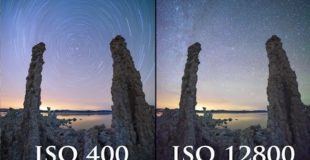Understand the mysteries of ISO: when to change it and when to leave it alone.
Questions? Check out my FAQ page:
https://www.professionalphototips.com/frequently-asked-questions/
Subscribe to my newsletter to receive the very best in Nature Photography and Photo Education:
http://www.professionalphototips.com/newsletter-signup/
—
Joshua Cripps is a full-time landscape photographer living near Yosemite National Park in California. His recent work includes the worldwide marketing campaign for the Nikon D750 camera.
For more landscape photography, tutorials, and workshops visit:
http://www.professionalphototips.com/
http://instagram.com/JoshuaCrippsPhotography
https://www.facebook.com/JoshuaCrippsPhotography
http://www.SeaToSummitWorkshops.com
—–
All photos, text, and video are copyright Joshua Cripps. Any use without my express written permission is really not cool, man.
Original source

32 responses to “Photography Tutorial – ISO Made Easy”
I'm not even photographer and I did subscribe xD Interesting and clear video 😀 thanks!
Was that a spamalot/Monty Python regency at the beginning.
Ok, I never bother subscribing to YouTube channels or commenting but your videos have made me go against that this time around 😀
Wow! Seriously, incredible content and you explain everything in such a way that it makes complete sense instantly.
A huge thanks for taking the time to create and post your tutorials! Massively appreciated! 🙂
Hi. I am new to photography and still learning the basics of Shutter Speed, Aperture and ISO. Great video. Wonderfully adept, and USEFUL explanation of ISO. You've gained another Subscriber.
get rid of that annoying AF intro
New to the photography scene. Just ordered a new camera. And I was curious what the heck is ISO, and this is the best description ever. So easy to understand. Thank you.
:[
Back in my day… In the US we used ASA (American Standard Assoc). Then "we" switched to ISO to bring the world together. My original Kodak Vericolor ASA 160 but wedding photographers shot it at 100. When Fuji came out with 400 I changed to that and stayed with 400 my entire carrier. Now with digital I stick with 400 and I understand how to properly expose using aperture and speed. You can too and with digital its simple you don't have to send film in and wait till its processed.
Cheesy intro but I like it. hahaha
YOUR CHANNEL IS SO GOOD !!!!!!!!!!!!!!!!!!!!!!
i own a nikon p900 and i need help with the zoom,everytime i try to zoom i lose focus,any tips on how to zoom and keep a great focus,whats the set up?thank u
but what does changing the iso setting physically change in the camera. I understand it increases light sensitivity but what physically changes to accomplish that?
Youre weird ? but funny… so thats why i subscribed
horrible explanation I still don't know crap
opss . iso strikes ,
I shoot with an APS-C Canon Camera (the t6i). If anyone is starting photography or is curious to see what results you will get with it, check out my instagram @jramon323
nice tutorial! very fun to watch!
Annoying pr@@@ switched off after 20 secs
What about trying to get a print out of such high ISO pictures? Any tips or suggestion? I'm just wondering, because it seems that the only way to reduce the noise of ISO is a) better gear b) resizing the image.
It's full of Motion blur….poop
Thanks for explaining. Now I understand what ISO is and when to use and when not to use it. I knew what it was but I used it at random times so thank you!
I thought ISO wasn't an acronym?
Hey, great video! One problem that I run into when shooting at high ISO settings is photo noise. Do you have any tips for ensuring photographs remain crisp and clear, even at high ISO settings?
thank you 🙂
intro, best part!!
sir i am beginner . and your advice is awesome .
sweet tips! thank you !
Hi Josh, if increasing ISO increases light sensitivity and grain, how come the 2nd photo of the albatross with high ISO wasn't grainy at all?
Is the bird in the clear shot of the bird real? It looks CGI to me.
OK as someone who took a professional class in photography ISO does not… I repeat…. does NOT stand for anything. the letters I, S, and O are not representing something. the word is ISO. also it was really cool to learn that's how ISO works. although my phone won't let me control the ISO aperture and shutter speed all together. only two at a time.
I have a big question that I have been puzzling over for a while. Please can someone answer it with more knowledge than me. In your first example you changed the iso to manipulate the shutter speed on aperture priority. Why don't you change your camera to manual so you can change both the aperture and the shutter speed while leaving the iso alone! sorry I am new to photography.
Ughhhh the cringe in the intro?????